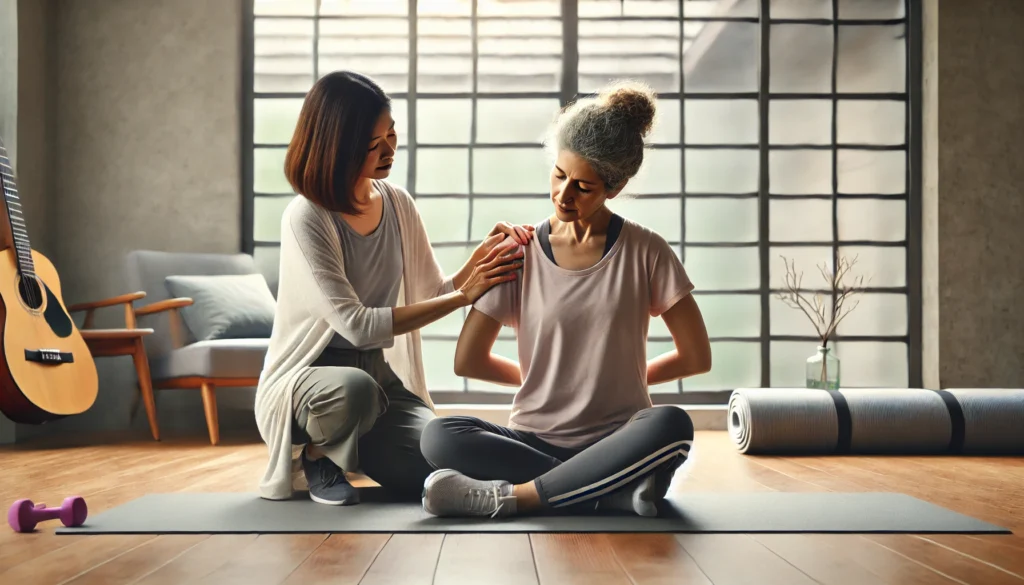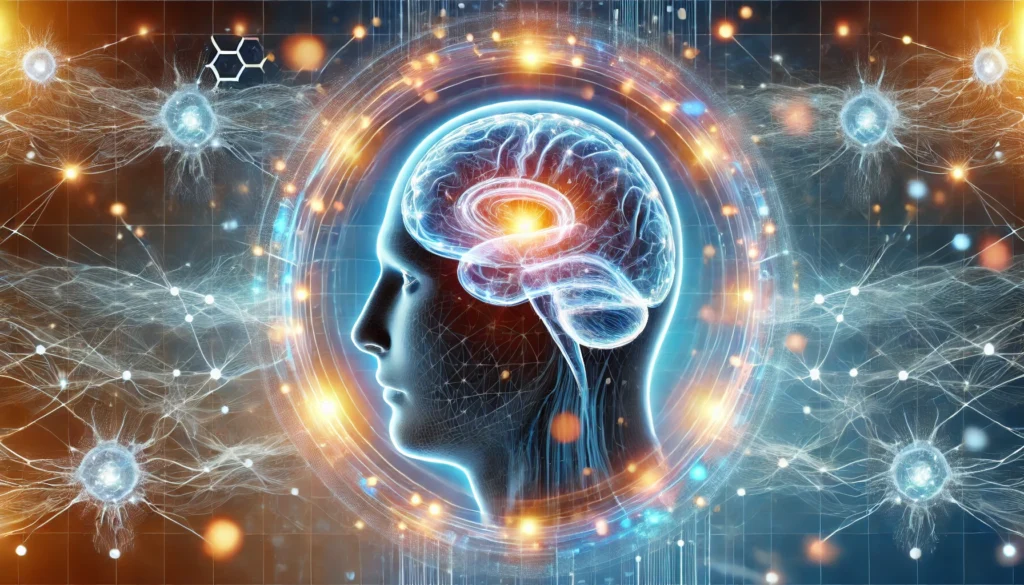A stroke is a life-altering event that can leave individuals struggling with physical, cognitive, and emotional challenges. The journey to recovery requires a combination of medical treatment, lifestyle changes, and cognitive rehabilitation. Understanding what heals the brain after a stroke is crucial for optimizing recovery and regaining independence. This article explores the science of stroke recovery, strategies to enhance cognitive function, and long-term approaches to brain health.
You may also like : Best Things for Brain Health: Expert-Backed Strategies to Keep Your Mind Sharp
Understanding Stroke and Its Impact on the Brain
A stroke occurs when the blood supply to part of the brain is interrupted, depriving brain cells of oxygen and nutrients. This can result from a blockage (ischemic stroke) or bleeding (hemorrhagic stroke). The extent of damage depends on the severity and duration of the stroke. The brain after stroke undergoes a complex process of repair and adaptation, known as neuroplasticity, where surviving neurons form new connections to compensate for lost functions.
The Role of Neuroplasticity in Stroke Recovery
Neuroplasticity is the brain’s ability to reorganize and adapt by forming new neural pathways. This adaptability plays a key role in stroke recovery, allowing the brain to compensate for lost functions. Rehabilitation exercises, cognitive training, and lifestyle modifications can enhance neuroplasticity, promoting faster and more effective recovery. Research has shown that engaging in specific activities, such as physical therapy and mental exercises, can strengthen neural networks and improve functional outcomes.
Medical Interventions for Stroke Recovery
Medical treatments for stroke recovery often involve a combination of medications, physical therapy, and specialized interventions. Clot-dissolving drugs, such as tissue plasminogen activator (tPA), can help restore blood flow in ischemic strokes if administered promptly. Other medications, including antiplatelets and anticoagulants, reduce the risk of recurrent strokes. Additionally, rehabilitation programs tailored to individual needs can help restore motor skills, speech, and cognitive function.
The Importance of Physical Rehabilitation
Physical rehabilitation plays a crucial role in stroke recovery by helping individuals regain movement and strength. Physical therapy focuses on improving motor skills, balance, and coordination through targeted exercises. Occupational therapy helps patients relearn daily activities, while speech therapy addresses communication challenges. Regular physical activity can also enhance cardiovascular health, reducing the risk of future strokes.

Nutrition and Brain Health After a Stroke
A nutrient-rich diet supports brain recovery and overall well-being. Certain foods are known to promote neuroprotection and cognitive function. Omega-3 fatty acids, found in fish and flaxseeds, support brain cell repair. Antioxidant-rich foods, such as berries and leafy greens, help reduce inflammation. Additionally, maintaining stable blood sugar levels and staying hydrated are essential for optimal brain function.
Cognitive Rehabilitation Strategies
Cognitive rehabilitation involves structured exercises designed to improve memory, attention, and problem-solving skills. Brain training programs, such as puzzles, memory games, and strategic thinking exercises, can stimulate neural pathways and enhance cognitive function. Mindfulness meditation and relaxation techniques also play a role in reducing stress and improving focus, which are essential for brain health after stroke.
The Role of Sleep in Brain Recovery
Quality sleep is vital for brain repair and recovery. During deep sleep, the brain consolidates memories, removes toxins, and strengthens neural connections. Sleep disturbances are common after a stroke, making it important to establish a consistent sleep routine. Creating a relaxing bedtime environment, avoiding caffeine before sleep, and engaging in relaxation techniques can improve sleep quality and support cognitive function.
Emotional and Psychological Support
Emotional well-being is a critical component of stroke recovery. Many stroke survivors experience depression, anxiety, or frustration due to the challenges they face. Support from family, therapy, and social groups can provide emotional stability and motivation. Practicing positive affirmations, setting realistic goals, and celebrating small achievements can boost confidence and resilience during recovery.
The Future of Stroke Recovery: Emerging Therapies
Advancements in medical research are leading to innovative therapies for stroke recovery. Stem cell therapy, neurostimulation, and brain-computer interfaces hold promise for enhancing neural repair and function. Ongoing studies continue to explore new treatments that could further improve outcomes for stroke survivors.

Frequently Asked Questions: Healing the Brain After a Stroke
1. How long does it take for the brain to heal after a stroke?
The time required for the brain after stroke to heal varies depending on factors such as stroke severity, individual health, and rehabilitation efforts. Some stroke survivors show significant improvement within the first three to six months, while others continue to experience recovery for years. What heals the brain after a stroke largely depends on the level of neuroplasticity, which is the brain’s ability to rewire itself. Engaging in consistent therapy, mental exercises, and lifestyle modifications can accelerate progress. Patience and persistence play a crucial role in maximizing long-term recovery.
2. Can diet influence brain recovery after a stroke?
Yes, nutrition plays a significant role in healing the brain after a stroke. Foods rich in antioxidants, such as blueberries and dark leafy greens, help reduce inflammation and support cognitive function. Omega-3 fatty acids found in fish and walnuts contribute to neural repair and plasticity. Maintaining stable blood sugar levels and avoiding processed foods high in sugar and trans fats can prevent further vascular damage. A brain-healthy diet, combined with hydration and proper vitamin intake, can enhance recovery and improve overall brain function.
3. Is it possible to regain full cognitive function after a stroke?
Cognitive recovery varies among stroke survivors, but significant improvements are possible with targeted interventions. Cognitive rehabilitation therapy, memory training, and mental stimulation can help restore lost functions. The brain after stroke is highly adaptive, meaning that uninjured areas can take over some of the lost abilities through neuroplasticity. Emotional well-being also plays a role in cognitive recovery, as stress and anxiety can impede progress. A positive mindset, combined with consistent cognitive training, increases the likelihood of regaining essential cognitive skills.
4. How does physical activity contribute to brain healing after a stroke?
Exercise stimulates blood flow, which is essential for delivering oxygen and nutrients to the recovering brain. Regular physical activity also encourages neuroplasticity, improving motor skills and cognitive function. Activities such as yoga, swimming, and strength training can help stroke survivors regain mobility while supporting cardiovascular health. Even light movement, like stretching and walking, can enhance brain function by reducing inflammation and boosting neurotransmitter levels. What heals the brain after a stroke often involves a combination of physical and mental activities to promote overall recovery.
5. Can sleep affect the brain’s ability to recover after a stroke?
Sleep is crucial for the brain after stroke, as it facilitates memory consolidation, cellular repair, and toxin removal. Poor sleep quality can slow recovery by impairing cognitive function and increasing inflammation. Creating a bedtime routine, avoiding stimulants before sleep, and maintaining a consistent sleep schedule can improve sleep patterns. Some stroke survivors experience sleep disturbances, so seeking medical advice for sleep disorders like sleep apnea is essential. Prioritizing restful sleep supports the brain’s natural healing mechanisms and enhances recovery outcomes.
6. Are there alternative therapies that support stroke recovery?
Certain alternative therapies may complement traditional rehabilitation efforts by enhancing neuroplasticity. Acupuncture, meditation, and music therapy have shown potential in improving motor function, reducing stress, and enhancing brain connectivity. Hyperbaric oxygen therapy is another emerging treatment that may accelerate neural healing by increasing oxygen supply to damaged brain tissue. What heals the brain after a stroke can vary for each individual, so exploring alternative therapies under medical supervision can provide additional recovery options. While not all methods are scientifically proven, many stroke survivors find them beneficial alongside conventional treatments.
7. Can social interaction influence stroke recovery?
Engaging in social activities stimulates cognitive function and emotional well-being, which are essential for recovery. Conversations, group therapy, and social support networks help reinforce language skills and memory recall. Loneliness and isolation can negatively impact brain recovery, leading to depression and slower cognitive rehabilitation. Joining stroke survivor groups, participating in community activities, and maintaining relationships with family and friends create an environment that fosters mental and emotional healing. The brain after stroke thrives in supportive and engaging social settings that encourage communication and problem-solving.
8. What role does mental health play in stroke recovery?
Mental health is a crucial factor in stroke recovery, as depression and anxiety can hinder progress. Stress management techniques, such as mindfulness, breathing exercises, and therapy, can improve resilience and motivation. What heals the brain after a stroke is not only physical therapy but also emotional support and psychological well-being. Seeking counseling or joining a stroke survivor support group can provide reassurance and guidance. Maintaining a hopeful and determined mindset greatly contributes to overall recovery and cognitive enhancement.
9. Can technology assist in stroke rehabilitation?
Advancements in technology offer innovative ways to aid stroke recovery. Virtual reality therapy, brain-training apps, and robotic-assisted rehabilitation devices can help retrain cognitive and motor functions. Brain stimulation techniques, such as transcranial magnetic stimulation (TMS), show promise in enhancing neural recovery. Wearable devices that monitor movement and provide real-time feedback can optimize rehabilitation exercises. The brain after stroke can benefit from these technological interventions, making therapy more engaging and effective. Integrating technology into rehabilitation plans can accelerate progress and improve patient outcomes.
10. What are the long-term strategies for maintaining brain health after a stroke?
Long-term brain health requires continuous effort beyond initial recovery. Maintaining a heart-healthy lifestyle by managing blood pressure, cholesterol, and stress levels reduces the risk of recurrent strokes. Engaging in lifelong learning activities, such as reading, puzzles, and new hobbies, keeps the brain active and resilient. What heals the brain after a stroke also includes maintaining strong social connections, practicing stress reduction techniques, and prioritizing mental stimulation. Regular medical check-ups, along with a proactive approach to well-being, can ensure lasting cognitive function. By adopting these habits, stroke survivors can sustain brain health and improve their quality of life.

Conclusion: A Holistic Approach to Brain Healing
Healing the brain after a stroke requires a multifaceted approach that includes medical treatment, physical and cognitive rehabilitation, nutrition, and emotional support. Understanding what heals the brain after a stroke allows individuals to adopt effective strategies that promote recovery and enhance cognitive function. By integrating these practices into daily life, stroke survivors can improve their quality of life and regain independence.
stroke recovery exercises, neuroplasticity therapy, brain rehabilitation strategies, post-stroke cognitive therapy, improving brain function after stroke, stroke rehabilitation techniques, brain health after stroke, neurological recovery methods, enhancing cognitive function, stroke survivor recovery tips, mental exercises for stroke patients, rebuilding brain connections, speech therapy for stroke patients, physical therapy after stroke, boosting brain resilience, stroke prevention and recovery, holistic stroke rehabilitation, lifestyle changes for brain healing, memory improvement after stroke, emotional recovery post-stroke
Further Reading:
Treatments to Promote Neural Repair after Stroke
Brain Recovery After A Massive Stroke: Is It Possible?
Cognitive Impairment After Stroke: Rehabilitation Strategies and SMART Goal Setting
Disclaimer
The information contained in this article is provided for general informational purposes only and is not intended to serve as medical, legal, or professional advice. While Health11News strives to present accurate, up-to-date, and reliable content, no warranty or guarantee, expressed or implied, is made regarding the completeness, accuracy, or adequacy of the information provided. Readers are strongly advised to seek the guidance of a qualified healthcare provider or other relevant professionals before acting on any information contained in this article. Health11News, its authors, editors, and contributors expressly disclaim any liability for any damages, losses, or consequences arising directly or indirectly from the use, interpretation, or reliance on any information presented herein. The views and opinions expressed in this article are those of the author(s) and do not necessarily reflect the official policies or positions of Health11News.


